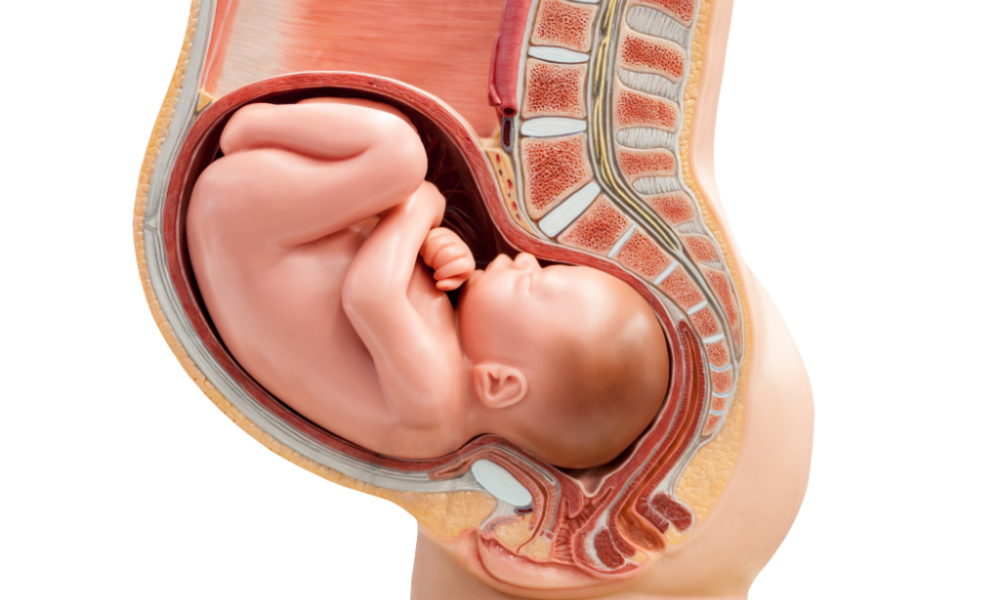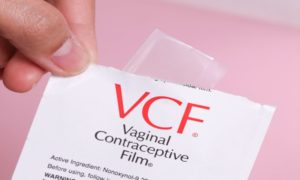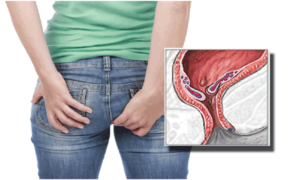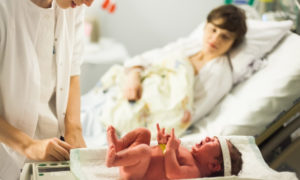What Does A Vagina Look Like After Birth-11 Ways The Vagina Changes After Birth
It is natural for the body of a woman to go through many changes while providing room for the growing fetus. It is not easy to have a human grow inside of us. There are several side effects of pregnancy that leave temporary or lasting effects on the body of a woman. Many are the changes that take a toll on the minds on the physical health of the pregnant.
Ever since a woman conceives, there is an array of changes that takes place inside her body. With the uterus growing with each day, a woman experiences distinctive symptoms every month. In the first trimester, the major symptoms are nausea and vomiting. Another symptom is mood swings, bloating, headache, increased exhaustion, food cravings, and many other symptoms.
In the second trimester, the symptoms from the first trimester may reduce. For instance, nausea and vomiting may reduce, but the symptoms from the second trimester might start showing. A woman mainly experiences increased frequency to use the toilet with the increased pressure of the growing uterus on the urinary bladder.
Similarly, a person might have severe constipation due to the fluctuating hormones, lack of fluids in the diet, or reduced fiber intake. At this stage, most women are recommended with iron supplements to prevent them from becoming anemic, and to ensure good blood supply to the baby.
On the other hand, the weight of the growing baby puts pressure on the back, too. Women often complain of backaches and sleepless nights because of this. Another common symptom is burning urination. It primarily happens because of reduced water intake, and it is a very common problem most pregnant women present within the clinics of their doctors.
Furthermore, swelling of the feet also presents in the second trimester. All of the symptoms may or may not present in every symptom. However, they are very commonly found in pregnant women.
In addition to this, in the third trimester, the symptoms only tend to aggravate. A woman has severe backaches, mood swings, food cravings, uncomfortable and reduced sleep, disturbed appetite and bowel habits, and increased trips to the bathroom, even more than before.
Even when the pregnancy is over, and a woman has delivered her baby, the challenges do not end. There are lasting changes that happen to her body. For instance, the appearance of stretch marks on the abdomen may be hard to get rid of.
The vagina, on the other hand, also stretches to allow the baby to pass from the birth canal. Women often worry if their vagina would remain the same after it has stretched so much at the time of the delivery.
We should remember that a vaginal is a very elastic part of the women’s reproductive tract. It has to stretch extensively to let the head of the baby pass. However, the vagina does go back to its usual position and reduces in size. The point to ponder is that even though the vagina goes back to its normal size after stretching but not completely to its actual state, it may remain too loose and inelastic.
In this article, we are going to discuss the changes that occur within the vagina after the birth of a child.
11 Ways The Vagina Changes After Birth:
Lose And Wider Vagina
It is of no surprise that the vagina has to become loose and inelastic when it has to squeeze the head of the baby through the canal. Women often worry if they will lose the tightness of their vagina, and it may be true. This is because the vagina is made of muscles that stretch to its full extent during the time of birth. It also goes back to its regular size after the baby is born.
However, a vagina after delivery stays a bit loose and may not achieve its tightness once it has been stretched extensively. A woman is unable to use tampons with a wide vagina, and the reason is pretty obvious. The tampons keep falling out from the vagina now that the vagina is wider than usual.
Some women may say that vagina feels more ‘open,’ and it is true because the vagina does not go back to its usual position like that before birth. Having a loose vagina is not a problem. If someone finds it uncomfortable, they can talk to their doctors about it.
On the other hand, one can do pelvic exercises to strengthen the vagina. Doing pelvic strengthening exercises regularly can significantly help with reducing the size of the vagina.
Post Partum Itch – Postpartum Vaginal Itching Causes And Treatment
Drier Vagina
Thanks to the pregnancy hormones and several other contributing factors, the vagina of the women becomes dry after the birth of their child. The dryness primarily happens because of the reduced levels of the hormones called estrogen, which is very high during the time of pregnancy.
Estrogen is a hormone that maintains the wellness of the vagina. It keeps it healthy and keeps it moist with secretions. With the end of pregnancy, the levels of estrogen drop suddenly. This reduction of estrogen causes the vagina to shrink a bit and become extremely dry.
Moreover, when a mother delivers her baby, another hormone called prolactin rises in her body to produce milk. As the prolactin levels rise, the levels of estrogen reduce because these hormones are antagonists of one another. This further aids in the reduction of estrogen that, in turn, makes the vagina dry.A woman can help herself by using ice packs multiple times during a day, from keeping her vagina free of pain. Also, using water instead of toilet paper can help with reducing dryness and pain.
Vaginal Tear
It is not so surprising that a woman may experience vaginal tears during birth. This can happen because of multiple reasons. The most common is the head of the baby, which is so large to pass through the vagina, and it ends up tearing the vagina.
Vaginal tears are divided into degrees. The first degree is where only the skin of vagina tears. This kind of tears may not need stitches, and it also heals very quickly within four weeks.
Second degree tears involve the skin as well as the muscles of the perineum that supports the urinary bladder, rectum, and uterus. With this kind of tears, a woman may need stitches, but the good part is that it also heals within four weeks.
Third degree tears involve the muscles of the anus, muscles of the perineum, and also the skin of the vagina. Unlike the first- and second-degree tears, third degree tears require stitches in the operation theater because it is a much serious tear. Also, third degree tears need more time to heal and cause a lot of discomforts.
Fourth degree tear, there is laceration of the muscles of the rectum, muscles of the anus, and also the tissues lining the rectum. This kind of tear also needs to be repaired in the operation theater, and it may take more or less 12 weeks to heal.
A mother can use painkillers and ice packs to bring relief to her condition during the time of healing of the tear. She must also consider wearing loose and airy clothes to allow maximum exposure that will aid in quicker healing.
What Is Vaginal Contraceptive Film – VCF ? Effectiveness & Reviews
Painful Sex
Women who may have sexual intercourse after a baby may say that sex becomes painful, and it happens for many reasons. The most common reason is the dryness of the vagina, where the natural secretions are not present to lubricate the vagina. With decreased lubrication, sexual intercourse becomes painful and rough.
On the other hand, having tears and stitches in the vagina can further aggravate the symptoms of painful sex.
A woman can talk to her doctor about this, and also use lubricants to ease her symptoms.
Color Changes
The pregnancy hormones and the stitches down there can alter the color of the vulva. The scar tissues also contribute to this color change. The scar tissues may appear as dark pigmentations and can leave lasting signs on the vulva.
There is nothing wrong with the change of the color of the vulva. If a woman finds it uncomfortable, then she can speak to her doctor about this.
When Do Postpartum Hemorrhoids Go Away- Complete Guide
Episiotomy Healing
An episiotomy is a cut in the lining of the vagina that doctors put at the time of delivery. This is primarily to assist the delivery of the child. Putting a cut in the vaginal wall creates the room the baby needs to come out of the birth canal.
The doctors may also do an episiotomy when they need to use forceps to deliver the baby. The incision is given after the consent of the woman. It is also stitched within the operation theatre, and it may take some time to heal.
Meanwhile, a woman must take good care of her incision and prevent it from getting infected. She should clean the area with soap and water and keep the area dry. She can also take painkillers to become free of pain.
Urinary Incontinence
Urinary incontinence is extremely common after the birth of a child. It is because of the weakened pelvic floor that fails to support the urinary bladder after delivery. The pelvic muscles become weak after ample straining and pushing during delivery.
It may take some time for the pelvic muscles to regain its strength. A woman may also consider doing pelvic muscle exercises to strengthen her pelvic floor muscles.
Injury During Birth
There are always high chances of injury to the woman or the baby during birth. At the time of delivery, any injury due to the use of forceps to tears may prolong the process of recovery after postpartum for a mother.
Postpartum Nursing Diagnosis And Care For New Mothers
Postpartum Discharge
Postpartum discharge is commonly termed as Lochia. It is a mixture of the remaining tissues present inside the uterus and secretions present in the birth canal that leave the vagina. It almost takes up to six weeks for the discharge to stop.
The discharge at first may be red in color, but as time passes, the color may lighten, and so will the discharge. The discharge may also become so heavy, so the last straw for a woman is to wear diapers in such conditions.
This discharge is normal after delivery unless a woman notices anything odd like a color change or obnoxious smell from it—otherwise, the discharging fluid aids in the uterus shrinking back to its regular size.
Sore Vagina
It is expected for the vagina to become sore after birth because it stretches extensively. This natural process may exhaust the muscles and tissues present near the vagina that may lead to the sourness of the region. However, with some special care, a woman is able to take care of the soreness. The best way is to use ice packs multiple times during a day that may help in reducing the sourness.
Scar Tissue
The incision or the tear that a woman receives during delivery may lead to scarring. This scar tissue probably stays with a woman for the rest of her life, leaving a lasting sign of delivery through the vagina. The scar tissue may also become pigmented or darker than the color of the rest of the vulva.
Weakened Pelvic Floor
Many women commonly experience a weakened pelvic floor after giving birth. The pelvic floor is made up of muscles that help and support multiple organs. Everything rests on the pelvic floor. Organs like urinary bladder, uterus, and the rectum rest on the pelvic floor. With a weak pelvic floor where its muscles are fatigued, a woman may experience severe incontinence.
It primarily occurs due to excessive straining at the time of vaginal delivery. The constant pushing makes the muscles of the pelvic floor feeble. If a woman finds it as a discomfort, she can always speak with her doctor about this.
The best way to strengthen the pelvic floor is through physical therapy and exercises. Doctors recommend women do Kegel exercises to make the pelvic floor strong, as it is made of muscles, and all muscles require physical training to stay strong.








11 reasons not to get a child. my sister had 6 of these points. some couldnt be treated, some she didnt want to be treated and some, that got better over time. it lead to a divorce because sex wasnt wanted and doable anymore and she didnt care, because mommy brain and hormones said: only care about your offspring, no matter the cost.